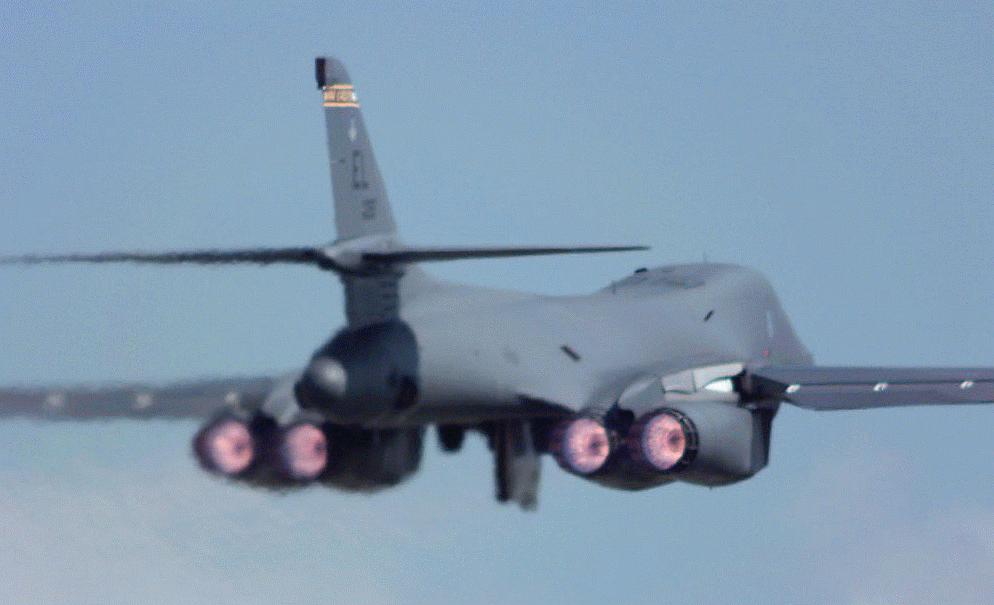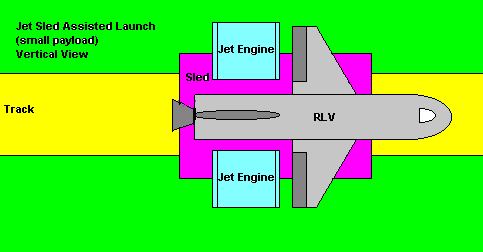SKY RAMP TECHNOLOGY

A Sky Ramp "sled" is similar to a huge railroad flatcar powered by rockets or jet engines, so perhaps "locomotive" is a better description. The B-1 bomber (right) provides an idea of what an all-jet powered sled may look like. It is now powered by four supersonic jet engines which produce 30,000lbs of thrust each. Modify the tail, cut off half the wings, add two more engines on each side, and mount it on rails. Now you have a supersonic sled with can produce 240,000lbs of thrust.
Larger
supersonic powered engines may be specifically designed like those depicted
below. The engines used on the 777 commercial aircraft generate up to
115,000 lbs of thrust each. The advantage of jet engines is they can be used
thousands of times, compared to a hundred times for rocket engines. They
are easier to fuel and can be kept ready for immediate launch.
However, rockets can produce far more thrust. The new Rocketdyne RS-83 hydrogen-oxygen engine will soon replace the Space Shuttle's SSME engines which were designed in the 1970s. An RS-83 will produce 640,000 lbs of thrust at sea level, compared to about 400,000 lbs for the SSME. Ideally, the sled will use the same engine and fuel as the RLV.
A Sky Ramp spaceport is likely to have several types of sleds on hand to launch different payloads. Some jet engine powered, some powered by two rockets, some by four rockets, and some by jets and rockets. Auxiliary jet engines may prove valuable for all rocket powered sleds since they can also provide reverse thrust for braking, and thrust for backing a sled down a track after launching an RLV. One issue with rockets is they produce a powerful torch which may damage the track. As a result, the rockets may be mounted on the sides of the sled. The sled may also have support "ribs" which fit tightly around parts of the RLV to ensure the thin fuel tanks walls can withstand high gs.
The sled will require a spoiler and rudder type control to compensate for wind and the aerodynamic effects of airflow. Fortunately, NASA has conducted several studies over the years with their high-speed ground test tracks. Lift is generated until it surpasses Mach, then the airflow is downward. These are minor problems, but must be addressed. None of this requires new research or new technologies, only development program to incorporate them into a sled.
©2008 Sky Ramp Technology